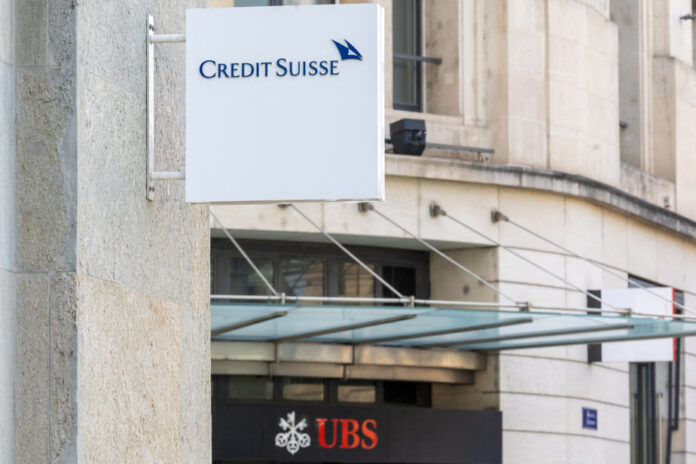(Zurich) The banking giant UBS will absorb the Swiss branch of Credit Suisse, which had made the reputation of the bank for more than a century, and cut more than 3,000 jobs in Switzerland to straighten out its former rival.
After weighing several options, including a spin-off, UBS decided to fully integrate the Swiss branch of Credit Suisse, which combines its retail banking, mortgage loans and loans to Swiss companies.
As a result, some “1,000 jobs” will be cut in Switzerland by the end of 2024, UBS boss Sergio Ermotti said at a conference Thursday on the occasion of the publication of the second quarter results. There will be “2000” additional job cuts in the coming years, given the “deep restructuring” that must be carried out to redress the ex-rival.
In March, under pressure from Swiss authorities, UBS agreed to buy Credit Suisse for just 3 billion Swiss francs to avoid bankruptcy.
The merger was finalized in June. UBS aims to complete the bulk of the integration by the end of 2026. By that date, the group is targeting $10 billion in savings in what is proving to be one of the “most complex bank mergers in history.” “, according to Mr. Ermotti.
The absorption of this Swiss branch is a thorny decision for UBS in the run-up to elections in Switzerland in October, because of its repercussions on employment.
Considered a nugget, this branch is the one that held up best in 2022, when Credit Suisse suffered massive withdrawals of funds.
Its turnover had then fallen by only 5%, against a drop of 54% in its investment bank and 30% in wealth management.
It is closely linked to the economic history of Switzerland, in particular for having financed rail as well as the beginnings of Nestlé or Swiss Re.
It’s a “strong brand,” Mr. Ermotti acknowledged, but it’s part of an “ecosystem” that was “no longer viable.”
Since the merger, UBS has conducted a thorough analysis of its rival, rocked by repeated scandals, which confirmed that its activities were “deeply flawed”, underlined Mr. Ermotti. It was not just a question of liquidity, but of “trust” and Credit Suisse was no longer able to survive “on its own”.
In the eyes of the boss of UBS, this integration is “the best solution” among the seven scenarios considered.
It’s “a very sad day for the employees of Credit Suisse who have shown great loyalty,” Claudine Esseiva, spokesperson for the Swiss Association of Bank Employees (Aseb), told AFP. .
In total, the two banks together employed around 120,000 employees worldwide at the end of 2022, including 37,000 in Switzerland, but departures have multiplied since the announcement of their merger. Duplicates are numerous in Switzerland between the hundred branches of Credit Suisse and the 200 of UBS.
The markets welcomed this decision. Around 6:40 a.m. (Eastern time), UBS shares jumped 5.10% to 23.29 Swiss francs.
This integration of the Swiss branch of Credit Suisse was “amply expected”, reacted Andreas Venditti, analyst at Vontobel in a stock commentary. The bank reassured in particular on the stabilization of capital flows, but an “enormous” task still awaits it, he warned.
In the second quarter, the first bank of Switzerland recorded a net profit of 29.2 billion dollars, without comparison with that of 2.1 billion dollars generated in the second quarter of 2022, due to numerous exceptional elements resulting from this merger, she said in a statement Thursday.
Credit Suisse suffered a quarterly loss before tax of 8.9 billion Swiss francs (9.2 billion euros). While its wealth management division continued to suffer from outflows, withdrawals slowed, with the balance turning “positive” again thanks to new money inflows in June, the statement said.
In practice, UBS and Credit Suisse will continue to operate separately in Switzerland until their planned merger in 2024. Both brands will be retained until clients migrate to UBS’s systems in 2025 and will maintain their sponsorship activities athletic.















